
The Purse area, which is on the western side of Maryland along the Potomac River, is an easily accessible shark tooth and turritella fossil locality. The Purse area is the former Purse State Park, which has been absorbed into the Nanjemoy Wildlife Management Area (WMA) which consists of several parcels of land along the east side of the Potomac River and along State Route 224 in southwestern Charles County. The Nanjemoy WMA is open to the public, and recreational activities include bird watching, fishing, and hunting as well as collecting fossils on the beach.
SHARK TEETH FOSSILIZATION
Shark teeth are one of the few easily recognizable parts of a shark that fossilizes. The internal skeleton of sharks is cartilage and disappears soon after burial in sediments. The main exceptions are the teeth and dermal ossicles, which are the tiny hard sandpaper-like protrusions on shark skin. The central vertebrate can also become calcified and is occasionally fossilized. Cartilage does not mineralize like bones and breaks down much quicker than the hard parts of a shark. Teeth are the most common shark fossil, but sometimes the fossilized dermal ossicles and pieces of vertebrate are found in the same sediments. The dermal ossicles are tiny and are not as easy to identify as the shark teeth.
Shark teeth become fossils through permineralization. Permineralization results when minerals dissolved in water fill the open spaces of an organism or organic tissue, and eventually, only the minerals remain. When a shark loses a tooth or a shark dies, the teeth and the shark sink to the bottom and may be covered by sediments. Teeth or sharks that are not buried, such as those that settle on a rocky bottom or in fast-moving water, will disintegrate. The buried sediment provides an anaerobic, or oxygen-deficient, environment and this preserves the tooth or other hard parts of the shark.
This story is from the {{IssueName}} edition of {{MagazineName}}.
Start your 7-day Magzter GOLD free trial to access thousands of curated premium stories, and 9,000+ magazines and newspapers.
Already a subscriber ? Sign In
This story is from the {{IssueName}} edition of {{MagazineName}}.
Start your 7-day Magzter GOLD free trial to access thousands of curated premium stories, and 9,000+ magazines and newspapers.
Already a subscriber? Sign In
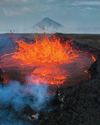
THE BRIGHT SIDE OF VOLCANIC ROCK
As a mineral resource, volcanic rock is decidedly short on glamour.
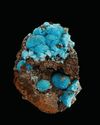
The Other Copper Minerals
12 Lesser-known Collectible Species

MINERAL COLLECTING -AND ROCK & GEM
Evolving Together FOR 54 YEARS

Gemstone Trends
A Look Back at 2024 & What to Expect in 2025
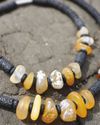
How to Make a GEM BEAD NECKLACE
No Lapidary Experience Needed!
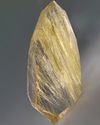
Framing Nature's Art
Faceting Rutilated Quartz for Beginners
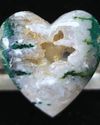
BEDAZZLED BLUE SEAM AGATE
More than several centuries ago, mining was the profession most often seen as befitting of men.
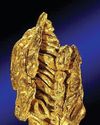
ROCK & GEM FIELD GUIDE:
Spinel is a captivating gemstone with a rich history of being mistaken for gems like ruby and sapphire.
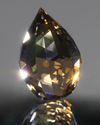
SNAKE SCALE DROP 1.5:1
This Faceting Focus is revisiting the briolette gemstone design because of its popularity with independent and hobby gemstone faceters.

STONE CHIC
How Earth-Inspired Decor Brings Comfort to our Home